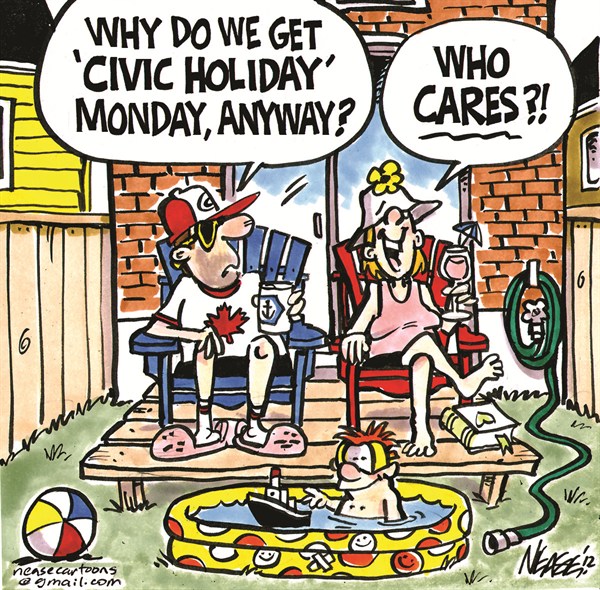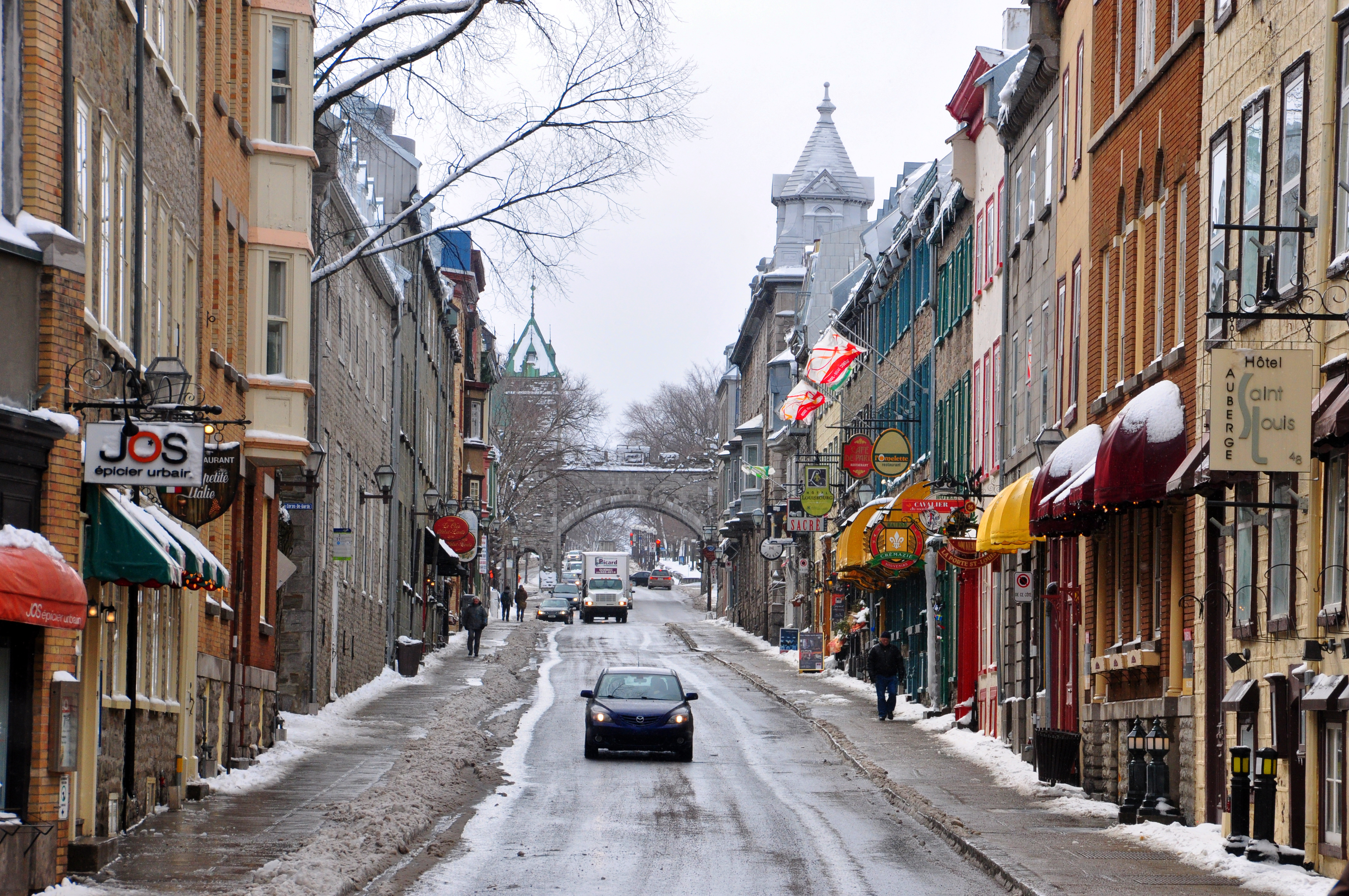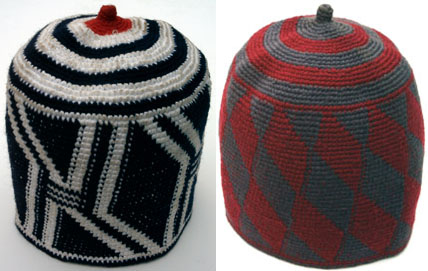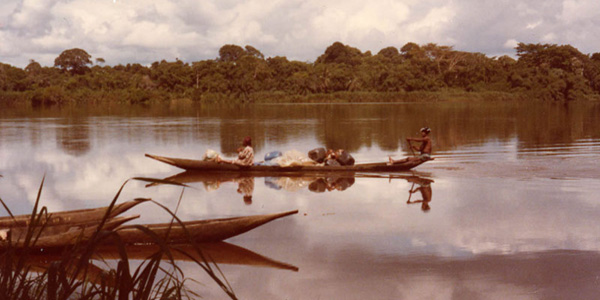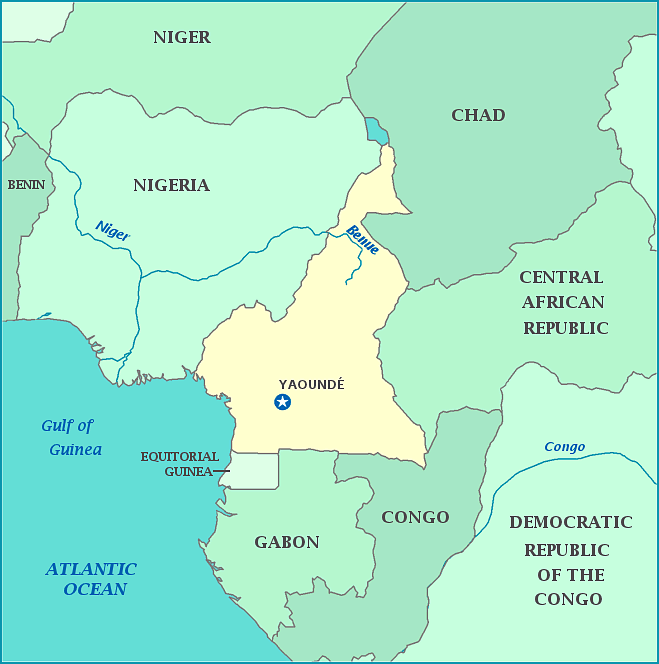The Canadians evidently followed in the path of the
Australians in making something like public holidays a moderately complicated
affair. In Canada, these are called “statutory holidays” (or “stat holidays,”
or simply “stats.” I’m not sure you can abbreviate it much more than that.
Maybe “sta” or “st.”) To complicate it, each province and territory has own
holidays, and sometimes will celebrate certain stat holidays on a different day
than others. For the sake of keeping things slightly simple, I’m only listing
the nationwide stat holidays, the ones that banks and federal employees get
off, and a couple others of note.
New Year’s Day. January 1. For
most people, New Year’s Eve is spent with friends and family. Others like to
spend it out at bars and clubs or at other parties with lots of drinks and
food. There’s actually a tradition in some rural areas, especially in Quebec,
where people will get together to go ice fishing at night on New Year’s Eve.
And like the United States, Canada has its own polar bear clubs who decide New
Year’s Day is the perfect time to go swimming outdoors. Because nothing brings
in the New Year like hypothermia.
Family Day. Third Monday in February. It’s a stat holiday in Alberta,
Ontario, and Saskatchewan, while British Columbia celebrates it the week
before. In Manitoba, they celebrate it, but under the name Louis Riel Day.
Likewise, Prince Edward Island calls it Islanders Day. It’s a day to celebrate
families and family involvement in the community. Museums, art galleries, and
other community events often will have free or reduced prices on this day. Many
people will try to use the long weekend to visit family or take a short
trip.
Good Friday.
Varies. This day is
observed in all provinces and territories, except for Quebec, who only
partially observes it (I’m guessing more on a voluntary basis as to who gets
off of work and who doesn’t?). For Christians, this is the day that marks when
Jesus was crucified upon the cross and died. Many churches hold special Good
Friday services, and hot cross buns are a traditional treat made (or bought)
around this time.
Easter Monday. Varies. Easter itself is held in many of the same ways as
the US and other countries that celebrate Easter: church services in the
morning, followed by a large lunch with family and friends. While Easter Monday
is considered a public holiday, many businesses and restaurants do open back up
on this day.
Victoria Day.
Monday on or before May 24. This holiday is in honor of Queen Victoria’s
birthday, the first sovereign of a Canadian province. It’s also considered the informal start of summer (like
Memorial Day is in the US). It’s
celebrated with parades and fireworks and everyone enjoys the long weekend.
Canada Day. July 1. This day was enacted for the signing of the British
North America Act of 1867 (also called the Constitution Act), which basically
united three colonies into one country called Canada. It’s celebrated in many of the same ways as other country’s
independence days: it’s decked out in the national colors of red and white, and
many towns clear their streets for annual parades; people gather at friend’s or
family’s homes to barbecue and fireworks displays light up the sky at night. Communities often hold large festivals
and public events with cultural arts fests and live music concerts.
August Civic Holiday. First Monday in August. Civic holiday is somewhat of a vague
holiday which more of less involved a day off to learn about and support local
arts, cultures, and heritages. Not every province and territory celebrates this
holiday, and many of those that do celebrate it under some other name.
Labor Day.
First Monday in September. Unlike most of the world who celebrates Labor
Day on May 1, Canadians celebrate Labor Day alongside the US on the first
Monday in September. Labor Day parades are common, and many people enjoy the
long weekend with barbecues and some take short trips. They also see Labor Day
as the unofficial end of summer and also follow the same unwritten rule we do:
you don’t wear white after Labor Day (which I’ve often thought was a stupid
rule and break it often.)
Thanksgiving. Second Monday in October. Thanksgiving in Canada generally is
celebrated under the same pretenses as the American holiday: a day designated
to give thanks for all that we have (and they also have Thanksgiving Day
parades and football as well). Because it takes place in October, it also
coincides with many Oktoberfests and other harvest fests as well. Cornucopias are common decorations. And many share
a meal of turkey or ham and many harvest vegetables (mashed potatoes, squash,
green beans, etc), and of course ending with pumpkin pie (probably not as good
as my mom’s pumpkin pie, though).
Remembrance Day. November 11. Also known as Armistice Day (or Veteran’s Day
in the US) and celebrated in Commonwealth countries to honor those who have
died in wars since WWI. Red poppies are a common symbol based on the poem “In
Flander’s Field,” and many are placed on the Tomb of the Unknown Soldier in
Ottawa. Community ceremonies, some with 21-gun salutes, and military parades
are often planned events on this day.
Christmas Day. December 25. Canadians decorate their homes and businesses
for Christmas weeks in advance, leading up to Santa Claus bringing gifts on
Christmas Eve night (in some families). Special church services are held, and
families spend time together eating large meals together. Plum pudding or Christmas pudding is
sometimes eaten out of tradition. Many people, especially in Quebec do their Christmas
activities on Christmas Eve.
Boxing Day. December 26. Primarily celebrated in
the Commonwealth countries, it’s a public holiday in most provinces and
territories. In Canada, Boxing Day
equals one of the largest shopping days of the year (like Black Friday [the day
after Thanksgiving] in the US).
For those who don’t shop, there’s always plenty of hockey…
Up next: art and literature



